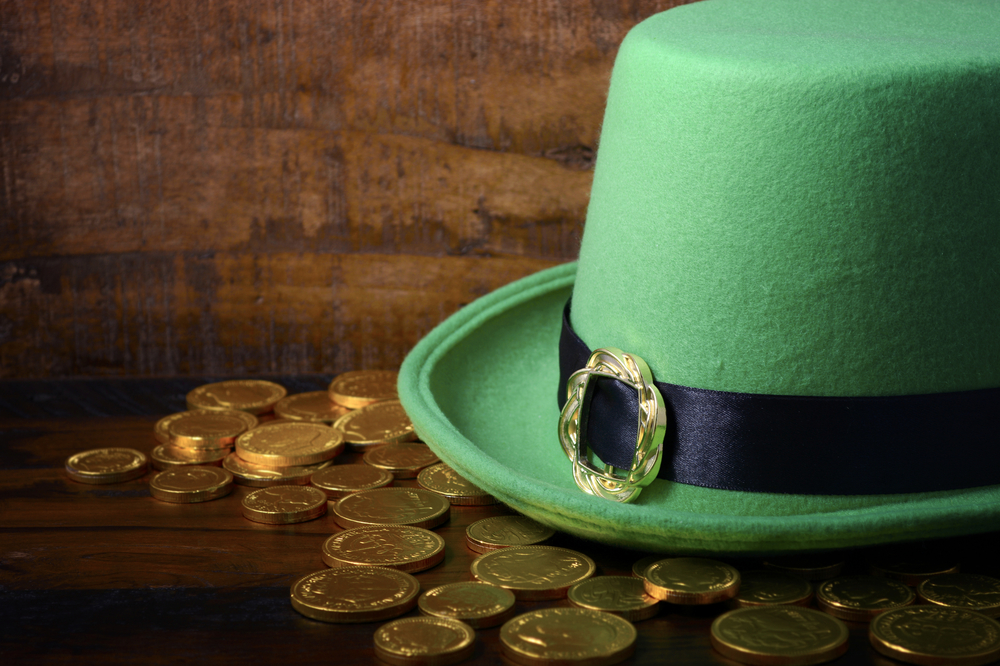
Explore the rich tapestry of St. Patrick’s Day history, originating in Ireland in the early 17th century to honor the patron saint on March 17th. Initially a religious feast day, it evolved into a celebration of Irish culture and heritage, blending ancient customs with modern influences. Discover the symbolism behind wearing green, the myths surrounding St. Patrick, and how this global celebration unites people worldwide. Embrace the vibrant festivities and delve deeper into the intriguing traditions and legends that make St. Patrick’s Day a cherished annual event.
The Origins of St. Patrick’s Day
St. Patrick’s Day, celebrated annually on March 17th, traces its origins back to the early 17th century in Ireland. The day commemorates the death of St. Patrick, the patron saint of Ireland. Originally, St. Patrick’s Day was a religious feast day to honor him, but over time it evolved into a celebration of Irish culture and heritage.
During the early 17th century, the Catholic Church established St. Patrick’s Day as an official feast day, recognizing St. Patrick’s efforts in spreading Christianity throughout Ireland. The day falls during the Christian season of Lent, but the restrictions on eating and drinking are lifted to allow for the celebrations to take place.
Over the years, St. Patrick’s Day has become a global celebration of Irish identity. People worldwide participate in parades, wear green attire, and enjoy traditional Irish foods and drinks. It has grown beyond its religious origins to symbolize unity, pride, and belonging for the Irish and those who celebrate alongside them.
St. Patrick: The Patron Saint
With deep historical roots in early Irish Christianity, the figure known as Patrick holds a significant position as the patron saint of Ireland. Born in Roman Britain, Patrick was captured by Irish raiders and brought to Ireland as a slave. During his captivity, he found solace in Christianity, eventually escaping and returning to his homeland. Patrick later felt a calling to return to Ireland as a missionary, where he played a crucial role in spreading Christianity throughout the land.
Known for his humility, kindness, and unwavering faith, Patrick’s legacy as the patron saint of Ireland is deeply ingrained in the country’s culture. Many Irish people view him as a symbol of unity and national pride, celebrating his life and teachings every year on St. Patrick’s Day. Through his missionary work and dedication to the Irish people, Patrick became a revered figure, embodying the values of faith, perseverance, and compassion. Today, his influence continues to resonate, shaping the cultural fabric of Ireland and fostering a sense of belonging among its people.
Evolution of St. Patricks Day Traditions
The celebration of St. Patrick’s Day has evolved over time, shaping a rich tapestry of traditions that reflect both historical roots and modern influences. Initially observed as a religious feast day commemorating the patron saint of Ireland, St. Patrick, the holiday has transformed into a global celebration of Irish culture and heritage.
One of the most iconic traditions is the wearing of green attire, symbolizing Ireland’s lush landscapes. Parades featuring vibrant floats, traditional music, and Irish dancers have become central to the festivities, with major cities around the world hosting grand spectacles.
Another beloved tradition is the consumption of Irish food and drinks, including hearty stews, soda bread, and of course, Guinness beer. Many communities also partake in the custom of decorating with shamrocks, in honor of St. Patrick’s use of the three-leafed plant to explain the Holy Trinity.
These traditions have evolved over the years, blending ancient customs with contemporary celebrations to create a sense of unity and belonging among people of Irish descent and enthusiasts of Irish culture alike.
Myths and Legends Surrounding St. Patrick
Surrounded by an aura of mystery and folklore, the myths and legends associated with Patrick delve deep into the fabric of Irish cultural heritage. One of the most famous legends revolves around St. Patrick banishing all the snakes from Ireland. While this story is widely popular, it’s more symbolic than literal, representing Patrick’s efforts to rid the land of pagan influence rather than actual serpents.
Another intriguing tale is the Shamrock legend, where St. Patrick used the three-leafed plant to explain the concept of the Holy Trinity to the Irish people. This legend not only showcases Patrick’s clever teaching methods but also highlights the significance of the Shamrock in Irish culture.
Additionally, there are stories of St. Patrick using the image of the sun to explain the power of Christ to the Irish druids, further emphasizing his role as a missionary and bridge between the old pagan beliefs and Christianity. These myths and legends add layers of mystique to St. Patrick’s character, making him a revered figure in Irish history.
St. Patricks Day Celebrations Worldwide
Celebrated across the globe, St. Patrick’s Day is a widely recognized cultural and religious holiday that commemorates the patron saint of Ireland.
The festivities on this day aren’t limited to Ireland; in fact, they’re embraced by people of various nationalities worldwide.
Cities like New York, Chicago, and Boston in the United States host grand parades with vibrant green decorations, echoing the Irish spirit.
In Australia, the Sydney Opera House is illuminated in green, symbolizing solidarity with the Irish community.
In Canada, Toronto’s iconic CN Tower shines in emerald hues, showcasing the country’s multiculturalism.
Even in places like Japan and South Korea, St. Patrick’s Day is celebrated with enthusiasm, demonstrating the global appeal of Irish culture.
These celebrations serve as a testament to the widespread influence of St. Patrick’s Day, uniting people from different backgrounds in revelry and cultural appreciation.
Historical Events Impacting the Holiday
Numerous historical events have significantly influenced the evolution and observance of St. Patrick’s Day throughout the centuries. One pivotal event was the establishment of St. Patrick as the patron saint of Ireland in the early 17th century. This recognition solidified his importance in Irish culture and laid the foundation for the holiday we celebrate today.
Another crucial moment in the history of St. Patrick’s Day was the Irish diaspora during the 19th century. As Irish immigrants spread across the globe, they brought their traditions and celebrations with them, helping to popularize St. Patrick’s Day in countries like the United States and Australia.
The Great Famine in Ireland also played a role in shaping the holiday. During this tragic period, St. Patrick’s Day became a symbol of Irish identity and resilience, a day to celebrate heritage and culture in the face of adversity.
These historical events, among others, have left a lasting impact on the way St. Patrick’s Day is observed and cherished worldwide.
Religious Significance of St. Patricks Day
The religious significance of St. Patrick’s Day lies in its roots as a day dedicated to honoring the patron saint of Ireland and spreading the teachings of Christianity. St. Patrick, the missionary who brought Christianity to the people of Ireland, is celebrated on this day for his contributions to the faith. His life and work are remembered through various religious observances, including attending church services, praying, and reflecting on the values he promoted. St. Patrick’s Day serves as a reminder of the importance of faith, perseverance, and spreading goodwill to others.
For many, St. Patrick’s Day holds a special place in their hearts as a day to reconnect with their religious beliefs and heritage. It provides a sense of unity and belonging within the community, as people come together to celebrate their shared faith and values. Whether through attending religious ceremonies or participating in traditional customs, the religious significance of St. Patrick’s Day continues to resonate with individuals seeking spiritual connection and a sense of belonging.
St. Patricks Day Symbols and Colors
As St. Patrick’s Day holds deep religious significance, a key aspect that enhances the celebrations is the intricate symbolism and vibrant colors associated with the day. The symbols most commonly associated with St. Patrick’s Day include the shamrock, which is said to have been used by St. Patrick to explain the concept of the Holy Trinity. This small, three-leafed plant has become an emblem of Irish identity and is often worn or displayed on St. Patrick’s Day.
Additionally, the color green plays a significant role in the celebrations. Green isn’t only a symbol of Ireland but also represents spring and the rebirth of nature. Many people wear green clothing or accessories on St. Patrick’s Day as a way to show their Irish pride and solidarity with the holiday.
In contrast, the color blue was originally associated with St. Patrick himself. However, over time, green became the dominant color linked with the holiday due to Ireland’s nickname, ‘The Emerald Isle.’ The vibrant greens and rich symbolism associated with St. Patrick’s Day bring a sense of unity and joy to those who participate in the festivities.
Modern-Day St. Patricks Day Festivities
Exploring the vibrant evolution of St. Patrick’s Day celebrations over time reveals a blend of traditional customs and modern festivities that unite people in a spirited commemoration of Irish heritage. Modern St. Patrick’s Day festivities have expanded beyond just parades and wearing green. In many cities, you can now find festivals featuring Irish music, dance performances, and cultural exhibits. These events offer a lively atmosphere where attendees can immerse themselves in the rich traditions of Ireland.
Moreover, many communities host St. Patrick’s Day pub crawls, where participants can enjoy Irish beer, whiskey, and traditional dishes like corned beef and cabbage. These pub crawls create a sense of camaraderie among attendees, fostering a fun and social way to celebrate the holiday.
Additionally, in recent years, there’s been a rise in family-friendly St. Patrick’s Day events, including craft activities for children, storytelling sessions about Irish folklore, and even pet-friendly parades. These initiatives aim to make St. Patrick’s Day a more inclusive and diverse celebration for people of all ages and backgrounds.
Frequently Asked Questions
What Are Some Traditional Irish Foods and Drinks Typically Enjoyed on St. Patrick’s Day?
You can savor traditional Irish foods like corned beef and cabbage, shepherd’s pie, and Irish soda bread on St. Patrick’s Day. Wash them down with a pint of Guinness or a shot of Irish whiskey for an authentic celebration.
How Did St. Patrick’s Day Become Associated With Wearing Green and Leprechauns?
St. Patrick’s Day is linked to wearing green due to Ireland’s lush landscape. Leprechauns, Irish folklore figures, got tied in through cultural storytelling. Over time, these symbols became synonymous with the holiday, adding to its festive charm.
Are There Any Lesser-Known Historical Figures or Events Related to St. Patrick’s Day?
Delve into lesser-known figures and events tied to St. Patrick’s Day, uncovering hidden stories that enrich the holiday’s history. Unearth fascinating narratives beyond the well-known traditions, adding depth to your appreciation of this celebration.
How Do Different Countries Around the World Celebrate St. Patrick’s Day in Unique Ways?
Around the world, countries celebrate St. Patrick’s Day uniquely. In Ireland, it’s a public holiday with parades and festivals. In the US, cities dye rivers green. In Singapore, there’s a vibrant Irish community celebration.
Are There Any Superstitions or Customs Specific to St. Patrick’s Day That Are Not Widely Known?
On St. Patrick’s Day, some lesser-known customs include wearing green to honor Ireland, pinching those not in green, and searching for four-leaf clovers for luck. Superstitions like finding a leprechaun’s gold persist, adding whimsy to celebrations.
Conclusion
You have delved into the rich history of St. Patrick’s Day, exploring its origins, traditions, myths, and celebrations. Through the evolution of this holiday, you have gained insight into the religious significance, symbols, and colors associated with it.
By understanding the historical events that have impacted St. Patrick’s Day, you have a deeper appreciation for the modern-day festivities that continue to honor the patron saint of Ireland. Cheers to the legacy of St. Patrick and the vibrant celebrations that commemorate his life.







